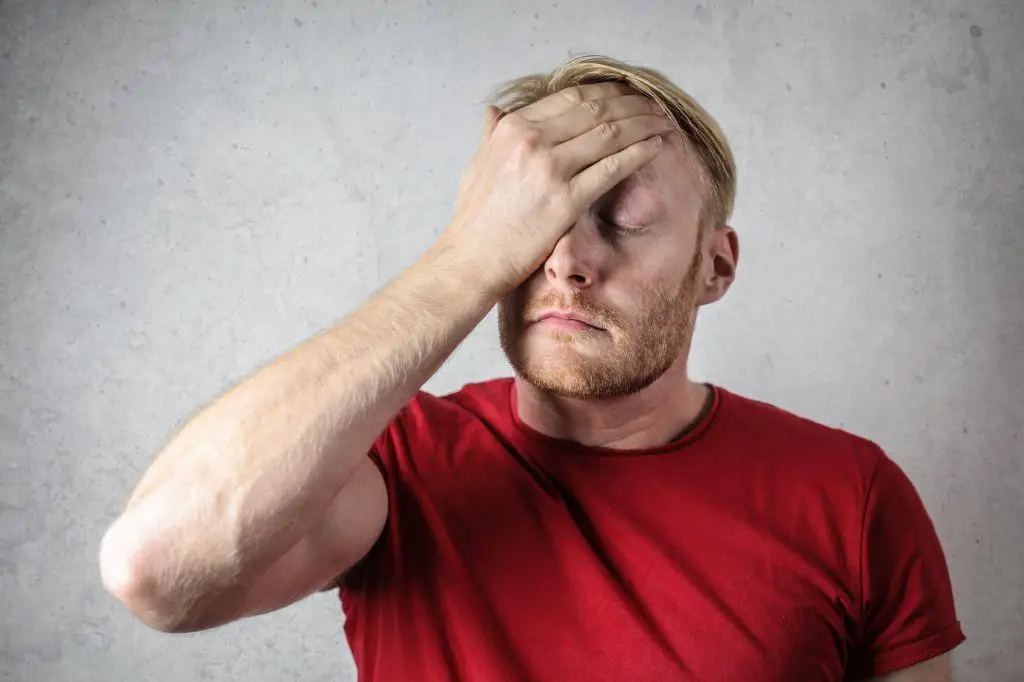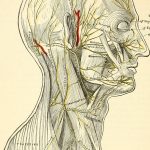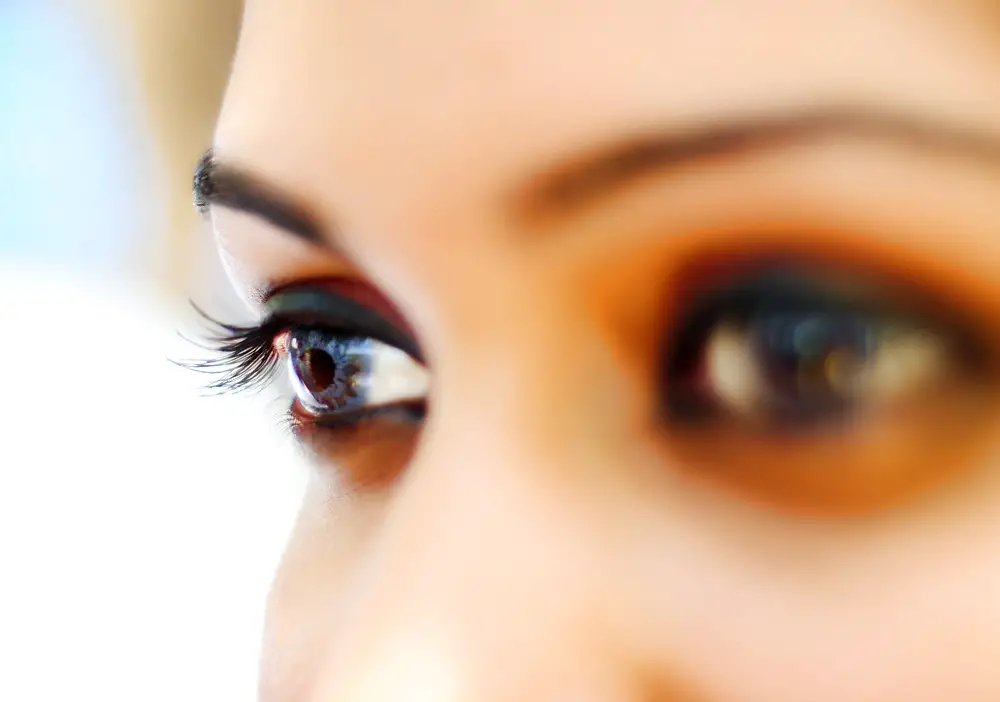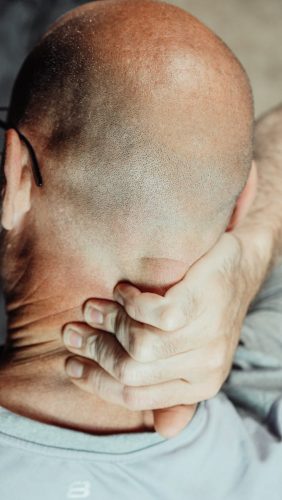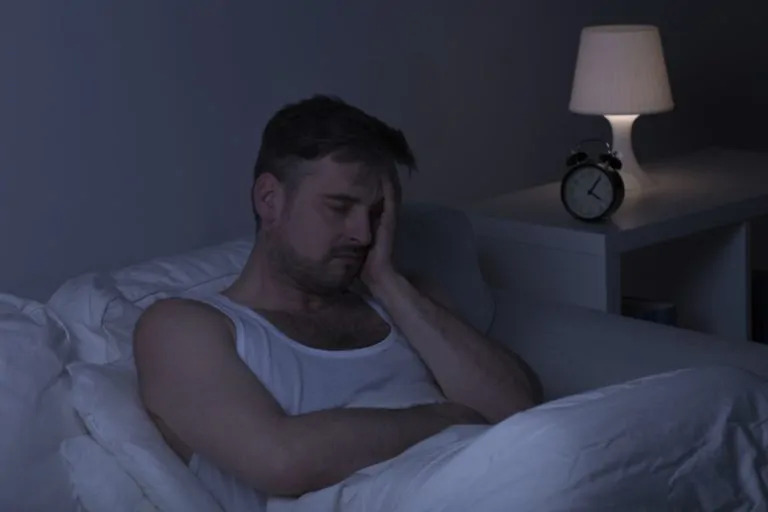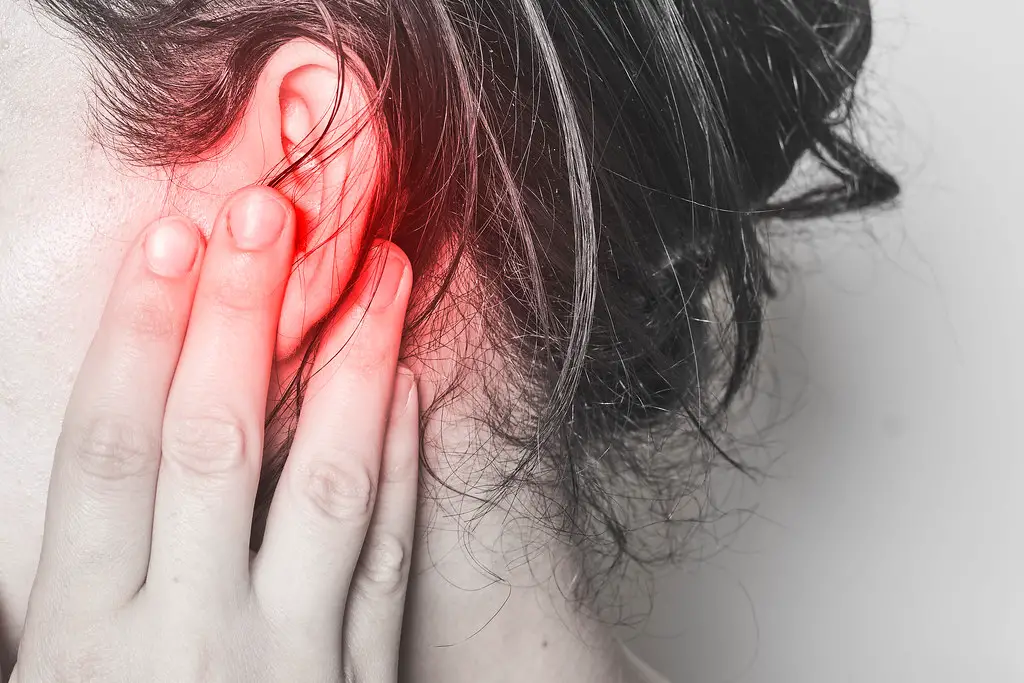Article reviewed and approved by Dr. Ibtissama Boukas, physician specializing in family medicine
Pain behind the head is often associated with headaches and migraines. And if it was Arnold's neuralgia that was responsible for these sharp pains?
What is Arnold's Neuralgia, and how do you recognize it? Is the diagnosis easy to make? How to deal with the resulting pain?
This popular article explains everything you need to know about Arnold's neuralgia, emphasizing simple concepts to understand and easy to apply to treat this condition.
Definition and anatomy
Before discussing Arnold's neuralgia, it is worth reviewing some notions of anatomy to better understand this condition.
Arnold's neuralgia (also called Arnolditis or greater occipital nerve neuralgia) results from irritation, inflammation, or injury to the occipital nerves, which run through the scalp.
There are three occipital nerves, and the main one is the greater occipital nerve (also called Arnold's nerve). It emanates from the posterior branches of the spinal nerves, and contains neurons from the posterior branch of the second cervical nerve (C2).
Its role is the innervation of the skin at the back of the scalp, as well as the innervation of the muscles of the posterior face of the neck.
If the occipital nerve is irritated in its course, characteristic pain and symptoms can result. This is called Arnold's neuralgia.
Arnold's Neuralgia Causes
There are many causes that can lead to Arnold's neuralgia. Among these are:
- Cervical arthritis
- Whiplash (whiplash) causing trauma to the occipital nerves
- Disc or facet degeneration causing irritation of the C2 and C3 roots
- Muscle spasms of surrounding muscles
- Tumors affecting the C2 and C3 nerve roots
- Drop
- Diabetes
- Inflammation of blood vessels
- Infection
Symptoms and complications
Among the symptoms of Arnold's neuralgia, the following are most often observed:
- Pain in the neck burning or throbbing type, with intermittent jolts or sharp pains, usually starting at the base of the head and extending to the scalp unilaterally or bilaterally
- Pain behind the eye or in the ear
- Headache or migraine
- Tingling in the head and neck that may radiate to the upper limb
- Vertigo (not to be confused with positional vertigo)
- Tinnitus feeling
- Functional difficulties (for example, brushing hair)
- Stress and anxiety
Stress: a factor responsible for Arnold's neuralgia
Le stress is one of the causes of Arnold's neuralgia. How come ? Well, the explanation is quite simple. A constant stress can exacerbate muscle tension in the neck, which promotes the appearance of arnold's neuralgia symptoms.
Le stress has many not very pleasant effects on our cervicals. It is often responsible for pain or stiffness in the neck and neck. When you are stressed, you put your cervical muscles in tension, without even realizing it. At the same time, excessive tension in the cervical musculature exerts a Compression on Arnold's nerve and causes his irritation.
Diagnostic
First of all, you should know that Arnold's neuralgia can be difficult to diagnose due to its similarities to other types of migraines and headaches.
Furthermore, there is no single test that can make a definitive diagnosis of Arnold's neuralgia. The health professional (often a neurologist) must therefore carry out a complete examination to conclude on an accurate diagnosis.
The differential diagnosis is important to know, and allows to differentiate Arnold's neuralgia from other similar disorders.
For example, in the case of Arnold's neuralgia, the pain is not associated with nausea, and there is no sensitivity to light unlike many types of migraines.
Also, pain originating from the occipital nerve affects more the neck and one side of the head, unlike the trigeminal neuralgia which mainly affects the face.
In addition, pain attacks related to Arnold's neuralgia are generally brief, intense and acute (a few seconds to minutes) unlike migraines where the attacks last much longer. The pain caused by Arnold's neuralgia is triggered quickly.
How then to diagnose Arnold's neuralgia?
On the one hand, a neurological evaluation is often conducted to rule out more serious impairment. This includes:
- Clonus and Babinsky test to exclude central nervous system involvement
- Reflexes
- Dermatomes
- Myotomes
- Visual examination
- Coordination tests
If the physical and neurological examinations are inconclusive, the doctor may request a medical imaging to clarify the diagnosis. A magnetic resonance imaging (MRI) examination may be prescribed, or a CT scan.
In some cases, an occipital nerve block may be used to confirm the diagnosis of Arnold's neuralgia. Indeed, if this cortisone infiltration immediately relieves the symptoms, we can conclude that the occipital nerve was the cause of the pain. Subsequent infiltrations will therefore be used as a treatment.
Fibromyalgia, a differential diagnosis that could be reminiscent of Arnold's neuralgia
As explained in the definitions, Arnold's neuralgia and fibromyalgia are different pathologies.
Arnoldite is nerve pain. In general, it radiates along the path of the greater occipital nerve: starts from the neck and lifts the left or right side of the head. In some cases, it may happen that the symptoms also reach the trapezius and thus the upper limbs.
When it comes to fibromyalgia, as mentioned above, pain, fatigue, and dysregulated sleep are the symptomatic triads of the condition.
In addition, it should be noted that the two pathologies can present similar symptoms. This is why many people confuse them.
Indeed, the pain caused by fibromyalgia can be located in various parts of the body: the shoulder, the buttocks, the spine, legs... Lower back pain is one of the most common cases of fibromyalgia and in the case where it affects the cervical region, it can be reminiscent of Arnold's neuralgia.
Mood disorders, stress, as well as sleep-related problem are also common of both diseases. The person affected by both pathologies wakes frequently at night and suffers from non-restorative sleep. As a result, she is under intense stress and she gets chronic fatigue. The triad forms a vicious circle.
In summary, the important point to understand is that fibromyalgia projects the pain all over the body, whereas Arnold's neuralgia causes only cervical symptoms. To obtain a reliable diagnosis and therefore an appropriate treatment, it is still wise to consult a health professional.
Treatment: How to relieve Arnold's neuralgia?
Like all musculoskeletal conditions, the goal will be to ideally use a non-invasive approach, and avoid surgery.
Many people want to “unblock” their arnold's nerve. Know thatit is not possible to loosen Arnold's nerve in the literal sense of the word. Scientifically speaking, we cannot speak of a “pinched nerve”, but rather of an “irritated nerve”.
Although Arnold's neuralgia is not serious in itself, it can be very debilitating in daily life. Several approaches can be considered to get rid of it.
Here are some treatment approaches that are often tried in the presence of Arnold's neuralgia:
The drug approach
In some patients, Arnold's neuralgia resolves spontaneously. In others, it is necessary to treat the cause. To lessen pain attacks, patients can take:
- Non-steroidal anti-inflammatory drugs (NSAIDs): these are drug treatments that relieve pain by reducing inflammation of the nerve;
- Analgesics: which will aim to reduce or eliminate the pain;
- Corticosteroid infiltrations: useful when previous treatments are not enough to cure the pain. They are powerful anti-inflammatories;
- Infiltrations of anesthesia which can be used in local infiltrations, such as corticosteroids, and potentially in association with them. These infiltration techniques are called mesotherapy. These injections relieve pain and muscle spasms and help reduce tissue inflammation.
physiotherapy and osteopathy
It is true that physiotherapy and osteopathy as such do not fully cure this disease. Nevertheless, they are likely to relieve Arnold's nerve pain and inflammation.
The objective will be to release all the tensions exerted on the level of the nerve in question. By doing so, professionals make the pain stop little by little. A rehabilitation of cervical spine may also be necessary in some cases.
Manipulations of the region of the skull, neck and back, in a physiotherapist and osteopath, can relax the muscles and relieve your pain.
Natural approaches
If the symptoms of Arnold's neuralgia are inflammatory in origin, ice is a very good temporary remedy. It should be applied 3 to 4 times a day to the base of the skull on the affected side, for 10 to 15 minutes. Heat may also be beneficial between ice applications to reduce local muscle spasms.
On the other hand, massaging the cervical region with appropriate essential oil will help you relieve pain and tension. For this, massage by pressing with your fingers along the trapezius, from top to bottom. Exercise pressure points, remaining pressed on the most painful points, for 10 seconds. This technique relieves pain effectively.
In addition, homeopathic remedies manage to relieve some patients although there is no scientific evidence to confirm the effectiveness of this method.
Arnold's nerve stimulation surgery
It is carried out in the neurosurgery services. This technique consists of a posterior approach to the neck, placing a few electrodes within the nerve. These electrodes will create a non-painful sensory impulse that will reduce the pain of this same nerve.
List of specialists involved in the treatment of Arnold's neuralgia
If you think you are suffering from Arnold's neuralgia, it is important to consult a doctor so that he can make a correct diagnosis. There are many different specialists who can treat this condition, depending on the underlying cause.
1. General practitioner
Your GP will probably be the first person you see if you think you have a Arnold's neuralgia. He will ask you about your symptoms and medical history and may order tests to rule out other potential causes of your pain. If your GP thinks you have Arnold's neuralgia, he may refer you to a specialist for further evaluation.
2. Neurologist
A neurologist is a doctor who specializes in disorders of the nervous system, including the brain, spinal cord and nerves. He will be able to confirm the diagnosis of Arnold's neuralgia and rule out other potential causes of your pain.
3. Doctor specializing in chronic pain
If you suffer from chronic pain, you may be referred to a pain specialist. This type of doctor can help you manage your pain and can recommend treatments such as physical therapy, injections, or medication.
4. Physiotherapist (physiotherapist) and osteopath
As mentioned, a physiotherapist (physiotherapist) or osteopath could help you relieve your symptoms through a combination of physical therapies, exercises and advice.
6. Alternative Medicine
There are many types of alternative medicine that can be used to treat Arnold's neuralgia. These include:
- Acupuncture;
- Homeopathy;
- massage therapy;
- Chiropractic;
- Herbal remedies.
It is important to speak with your doctor before starting any type of alternative treatment.
How to sleep with Arnold's neuralgia?
In some people with Arnold's neuralgia, the scalp becomes extremely sensitive to the slightest touch. Even putting your head on a pillow can therefore become very painful.
For tips on how to sleep better at night with Arnold's neuralgia (including pillow choice), see the following article.
Conclusion
Arnold's neuralgia is often underdiagnosed and confused with headache and migraine.
However, it is an attack of the great sub-occipital nerve which enormously affects daily life, work and social relations.
Follow-up by a healthcare professional is strongly recommended in order to clarify the diagnosis and establish appropriate management.
Good recovery !
Resources
Site of the Association of People who Suffer from Arnold's Neuralgia

